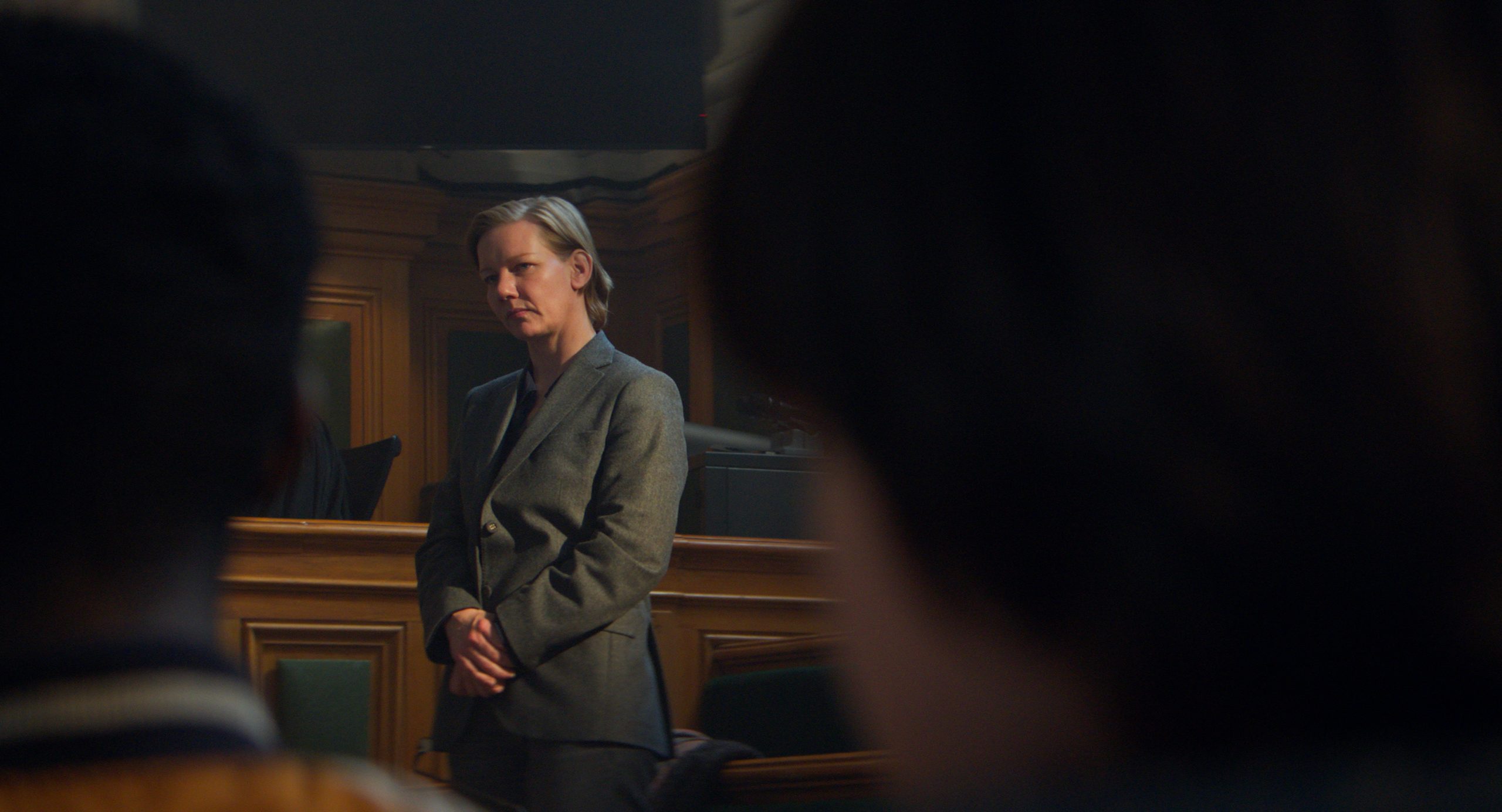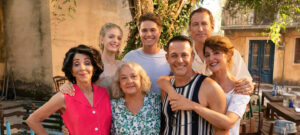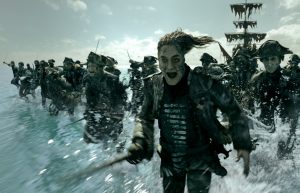On paper, Justine Triet’s Anatomy of a Fall (Anatomie d’une chute, 2023) sounds like a film you’ve seen before. First, the husband or wife dies under mysterious circumstances; second, the surviving spouse maintains their innocence; third, the investigating detective and/or lawyer intervenes, and the rest of the film follows a cat-and-mouse procedural with some instances of dubious morality scattered throughout the film.
These three components form the foundation of Anatomy of a Fall. The title of the film is a good overview: the husband, Samuel (Samuel Theis) falls to his death from the top of a two-story home. Then, we track the descent of the remaining characters as the wife Sandra (Sandra Hüller) tries to prove her innocence while taking care of her son Daniel (Milo Machado Graner). Joined by the lawyer Vincent (Swann Arlaud), the three grapple with grief and, perhaps, their own complicity in the murder.
But there’s something deeper here: a more accurate title would be Anatomy of a Marriage. The film starts like a murder mystery, but gradually it discloses the more intimate, painful details of a family. When all our flaws, failings, and mental health are on display, we can be viewed as monsters. Though the marriage is put on trial, the real verdict speaks to something far more universal: we are only human. No one’s personal life can be necessarily judged in the binary delineations of good or bad, innocent or guilty, truth-teller or liar.
Most of Anatomy of a Fall is in English, despite winning the prestigious Palme d’Or—first prize—at the annual Cannes Film Festival in France. English is the linguistic compromise for German-French couple Sandra and Samuel, but is nonetheless not the native tongue of any of the film’s characters, leaving the viewer at a chilly arm’s distance. The real lingua franca here is the court system, which acts as an imperfect conciliation for moral judgements. The structure of Anatomy itself rests on the razor-thin line between justice and the other side of the law. Sooner or later, we find that we cannot put blind faith in the law, or even in institutional systems like marriage or the family. Sometimes all we can do is what humans always do: fall.
The clever thing that Anatomy of a Fall does is that everything Sandra does contains two sides to it. Sometimes Triet shows her in moments of such tenderness—snuggled under the blankets with her dog at the foot of the couch and her son tucked under her head—that it seems impossible that Sandra could have murdered Samuel. Other times, we see this flame flash in Sandra’s eyes when she hears Samuel’s voice through the case recordings. Is it simply frustration about the case, or something darker? Triet’s intention here, however, is not to keep us guessing but to simply have us experience someone’s humanity to the fullest degree.
Aside from the intellectual and moral components of the film, there are a thousand intricate details within Anatomy of a Fall that make it a gorgeous, meditative watch—above all in its sensory work, thanks to Simon Beaufils’s cinematography. Set up in the Swiss Alps, there are moments of blinding, pure white snow that act as almost a cleansing for both the characters and the audience; other scenes, in the court case or the home, are lit in such dark relief that they represent a sort of metaphorical dungeon.
In one beautiful second during the film, Sandra and Vincent are both standing near a bonfire laughing, but it is not the laughter of joy—it is laughter at the conclusion of a tragedy. Warmth hits both of their faces, and for a brief moment in time they look young again: no wrinkles, gray hair, or burdens of life. Arland and Huller both shine in this performance as we as viewers take witness to a brief romance that is nothing more than a bad idea. They know it, you know it; but sometimes these things happen regardless of rational thought. They shine for that split second near the dying bonfire, and then Beaufils takes us back to reality. Back in the Alps, we see Daniel’s face: youthful in physical form, but with eyes like a prophet’s, unseeing and forever haunted. Beaufils likes to play with lights and age, and Daniel is consistently shot in dark, moody angles that make him appear more mature than he actually is, while the adults in the film are often taken out of the darkness and into the light.
After leaving the theater, with two-and-a-half hours of the remains of a marriage behind me, a certain memory overcame me. I thought back to those optical illusions you see as a kid. The ambiguous image. The wife and the mother-in-law. The rabbit and the duck. We can only see one of the realities at a time, but they exist simultaneously. She killed her husband. She didn’t kill her husband.
Anatomy of a Fall is a gorgeous magic trick. By design, every new scenario, behavior, response, facial expression, and every new piece of evidence can fit either narrative. Both women are there. Both animals are there. It depends on what you want to see.





